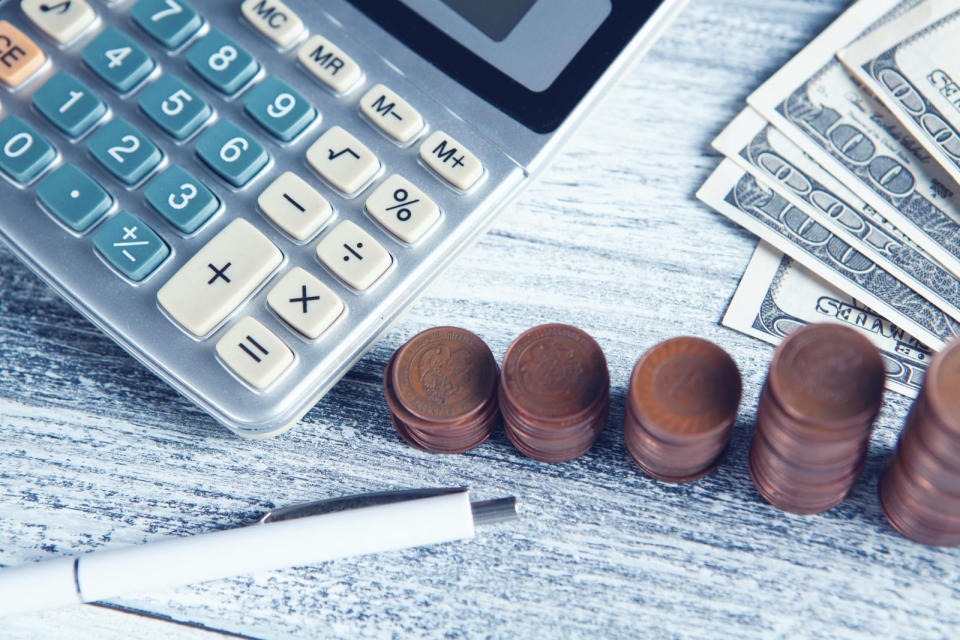Complete Guide To Retirement Planning in Singapore

Retirement planning is one of the most important things in our lives and loved ones’ lives as well. It is never too late or too early for you to start planning for retirement. There are a number of different retirement options and plans available to you. So whether you are just starting out on your retirement planning journey or nearing retirement, this guide has something for everyone!
The Importance of Retirement Planning
When you are planning for retirement, it is then when you decide to continue working or retire once you have reached retirement age. There are a few factors that you need to consider when making this decision, and the decision you will make should be based on:
You have a roof over your head (a house that has been fully paid)
You are free of debts obligations
You already have adequate and proper health insurance to cover for medical expenses
You have sufficient savings or passive income to fund your retirement lifestyle
If your present situation checks all the boxes, then you can think and plan for retirement. But, if it’s the opposite, it means you are not yet ready for retirement. There is still some preparation and work to do. Nevertheless, planning your retirement is important so the sooner you start planning, the more time for you to save and invest. This will prepare you and give you a much better chance of achieving and living your retirement lifestyle comfortably.
There are several retirement options available to you, but which one suits you best depends on your current and individual circumstances. This depends on a number of factors such as lifestyle, how long you expect to live in retirement, and inflation.
You can make an accurate estimate of how much money you need for your retirement using this online retirement calculator. It is very simple to use; simply enter your age, your desired retirement age, salary, and investment into the online calculator and it will provide an estimate of how much money you need to save for retirement.

Source: Unsplash
What is The Official Retirement Age in Singapore
According to the official retirement age in Singapore, starting on the 1st of July 2022, the retirement age is 63 years old and will gradually increase to 65 years old by the year 2030. The increase in retirement age was implemented to prevent and protect aged employees from being dismissed from their job early because of age-related reasons. Should an age-related dismissal happen, the affected employee may write an appeal to the Ministry of Manpower.
But this doesn’t mean you can not keep working once you turn 63 years old, because there’s a ‘re-employment age’ contract where you can still be offered to continue working until the age of 68 years old or you simply just extend another 5 years. Re-employment contracts last for about a year and are offered as long as you have satisfactory work performance and are medically fit to continue working. The re-employment contract too will gradually increase the maximum eligible age to 70 years old by 2030.
CPF Funds as One of The Sources for Retirement Income
Central Provident Fund (CPF) can be one of the sources of income during your retirement. Thankfully, the retirement age doesn’t indicate that you can’t withdraw from your CPF Retirement Account before you actually retire. However, you can only start to withdraw from the Retirement Account at the age of 55, but not fully.
A Retirement Account (RA) will be created when you turn 55 years old. Then, all of your CPF savings from Special Account (SA) and Ordinary Account (OA) will be transferred to form your Retirement Sum in your RA. The Retirement Sum will then be used to guarantee a monthly payout once you turn 65 and until you have passed on. You can increase the Retirement Sum by adding more cash or CPF savings to a higher retirement sum. This will maximise the interest of your RA and receive higher payouts once you reach the payout eligibility age.
The 3 different Retirement Sums
Type of Retirement | Sums RA Savings Required at 55 | Estimated Monthly Payout at 65 |
|---|---|---|
Basic Retirement Sums (BRS) | $96,000 | $770 – $830 |
Full Retirement Sums (FRS) | $192,000 | $1450 – $1550 |
Enhanced Retirement Sums (ERS) | $288,000 | $2120 – $2280 |
So how much can you withdraw at the age of 55?
As indicated by the table above, there’s a minimum amount required in your RA account to guarantee a certain monthly payout. You will need to maintain at least a BRS or $96,000. Even then you can only withdraw more if you are a property owner. The table below will show you how much you can withdraw at the age of 55 years old:
CPF Balance at age 55 | Minimum for property owners | Minimum for non-property owners |
|---|---|---|
Less than $5,000 | Withdraw full sum | |
$5,000 – $192,000 | Ensure a balance of min. $96,000 | Up to $5,000 |
More than $192,000 | Ensure a balance of min. $96,000 | Ensure a balance of min. $192,000 |
Related: Everything You Need To Know About Supplementary Retirement Scheme (SRS)

Source: Unplash
Building Retirement Plan
It’s all well and great that the government is providing good welfare to take care of your well-being via proper management of your CPF funds. But does your CPF Retirement Account really suffice for your retirement? How long can it last to support your retirement? For example, if your monthly payout is $1500 but your commitment and lifestyle require a minimum of $3000 a month, this means you will need to thoroughly plan and start building your retirement funds to guarantee you have sufficient funds to last for your entire retirement.
This means you need more than just CPF Retirement Account; there’s more than that you can actually do to prepare for your retirement. So here’s the game plan:
Savings plan
The best way to start saving money for retirement is by checking the Singapore Saving Bonds (SSB), which offers risk-free investment options to help you grow your retirement nest. The perks of having SBB as your saving plan is that it provides superior liquidity, allowing you to make any withdrawals when you really need them.
However, there are several other saving plans provided by financial institutions that you can take a look at. Though most of the savings plans are a lot less liquid than SBB. Most of the saving plans are also short-term in nature, 3 to 5 years in nature.
But if you are also interested in investing, then you can consider picking up Regular Shares Savings (RSS) which allows you to start investing by committing a fixed amount of money every month in shares, REITs, or ETFs. And to start it, you will need as little as $100 SGD a month.
The last step is to use the 25x rule to calculate your retirement needs. You can start by estimating your annual expenses in retirement and multiply the figure by 25. For example, if the estimation of your annual expenses will be $50,000 SGD, then, the rule will suggest that you will need a total of $1.25 million SGD saved to retire without worry. This way you can start applying and registering for saving plans that will help to save up that amount.
Insurance
There are four types of insurance plans that can help boost your retirement income; the first is the traditional annuity. An annual annuity will provide you with monthly or yearly payouts as long as you live. It works by paying an insurer a one-time single premium or via a series of payments over an agreed period. You will then get regular payouts for life.
Next, Retirement Income Insurance helps cover your life and it also provides a wider range of components like payouts period and additional cover for long-term care.
Another type of insurance that can contribute to your retirement income is the A Whole Life Insurance. It is a life insurance policy that incorporates a saving element and can be drawn upon surrendering the policy.
Finally, the Endowment Policies combine protection, savings, and investment in one single plan. However, the Endowment Policies have shorter and defined periods of coverage. The benefits will be paid in situations such as death, total permanent disability, or when the policy reaches maturity.
Investments
When you are young, typically, you would only be interested in capital gains made from investments; the profit you make when you buy low, and sell high.
But as you grow older, this perception gradually shifts to thinking of investment as more of a source of passive income. If not, you should shift it because the investment will become the idea and source of your passive income once you are in retirement.
There are certain investments that can produce steady passive income which would help to boost your income once you are in retirement. If you are a property owner, renting out your property is one such investment, if you are not a property owner but have a few spare rooms, then you can rent out the said rooms. This will generate a steady passive income in the long run. Or you can also collect dividends from dividend-bearing stocks.
But just how much investment do you need to achieve the desired saving and income for your retirement?
Typically, a high-yielding investment like REITs (real estate investment trusts) delivers around 5% to 8% a year in dividends. So, assuming your annual yield is 5%, then you will need to invest $240,000 SGD to generate $1,000 a month’s worth of dividends.
Read More: Everything You Need to Know About Investing in REITs Safely & Efficiently
But like any other investment, there’s no guarantee to it. Therefore, it is important to balance out any passive income-generating investments that you have, this includes properties because it is subject to the vagaries of the market.
So, now that you have reached the end of this guide, we believe that you have a better idea and insight now with your retirement plans. We wish you the best of luck with your retirement. Good luck!
Read More:
Fixed Deposit Vs Singapore Savings Bonds: Which Should You Go For?
Safe-Haven Assets — What Are They and How Can You Invest in Them?
[The article [link url="www.valuechampion.sg/complete-guide-retirement-planning-investment-insurance-savings-singapore"]Complete Guide To Retirement Planning in Singapore originally appeared on ValueChampion. ValueChampion helps you find the most relevant information to optimise your personal finances. Like us on our Facebook page to keep up to date with our latest news and articles. More From ValueChampion: 6 Retirement Planning Mistakes To Avoid
How To Monetise Your HDB Flat For Retirement In Singapore
Fixed Deposit Vs Singapore Savings Bonds: Which Should You Go For?

 Yahoo Finance
Yahoo Finance 


